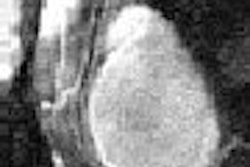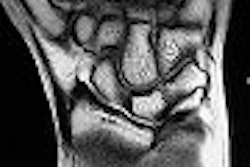MRI magnet technology marches steadily forward, improving year after year. As the technology advances, we find new clinical applications that allow us to expand the use of these phenomenal devices. We have already seen dramatic changes in the mix of patients in response to new means of utilization.
Overall, MRI is treating more patients every year with ever-growing acuity levels, but our MRI facilities are frozen testaments to our assessments of needs of years past. So what changes make it so vitally important to re-evaluate the safety provisions of our MRI facilities?
A key factor is the rise of interventional applications for MRI. While intraoperative systems are the extreme end of the interventional trend, the more immediate impact is in the growing number of image-guided minimally invasive procedures, such as biopsies. If nothing else, biopsies require staff, equipment, and supplies in the magnet room that wouldn't otherwise be in a suite used for strictly diagnostic imaging. Every additional person and piece of equipment entering the suite is an opportunity for accidents, particularly when the layout and operations haven't changed in response to the increased risks.
The same can be said for the increasing use of sedation for MRI exams. Whether it is indicated for claustrophobic or high-acuity patients, anecdotal reports suggest increasing patient safety concerns paralleling the growing use of anesthesia. In fact, the American Society of Anesthesiologists has formed a task force specifically charged with addressing the MRI safety concerns and stemming the rising tide of accidents.
Apart from growth in interventional applications and anesthesia cases, we are also seeing increasing use of MRI for emergent scans. For cord compressions, stroke assessments, and some traumas, hospitals are beginning to view MRI as a 24-hour service. Often these emergent patients are brought to the MRI suite with a trailing phalanx of clinicians and various monitors and support devices. The expedited screenings needed for emergent patients provide an enormous window of opportunity to wheel the patient in with the ferrous oxygen cylinder under the bed sheet or connected to an unsafe IV pump or pulse oximeter.
Where do we see evidence of all of these anecdotal increases? As reported in a previous article, the U.S. Food and Drug Administration's MAUDE database recorded a doubling of MRI accidents in the 12-month period ending mid-2006 from the year prior. In addition, the Joint Commission (formerly known as the Joint Commission on Accreditation of Healthcare Organizations or JCAHO) is expected to release a Sentinel Event Alert on MRI accidents, highlighting a few example accidents that are typical of a much larger number. As anemic as the reporting standards currently are, the FDA and the Joint Commission are logging increasing rates of accidents that all point to an alarming trend.
MRI providers must recognize that the risks to their patients, staff, and equipment have grown and take the opportunity to reassess what preventive measures are in place. Managing the risks as they were measured five years ago -- when MRI suites were designed and built in support of strictly diagnostic imaging -- may be leaving facilities open to accidents, lost magnet time, injuries, and lawsuits today.
In a future article on AuntMinnie.com, "MRI suite safety score," you will be invited to measure the specific risks and preventions for your facility. But even without the forthcoming scorecard, the overall message is clear: Our "safe modality" has become more and more hazardous to patients, staff, and our expensive equipment. Accidents rates are climbing and there is not a single silver bullet solution, though a careful analysis of your current facilities and practices is an excellent start.
By Tobias Gilk
AuntMinnie.com contributing writer
January 29, 2007
Reprinted from www.mri-planning.com by permission of the authors. If you would like more information on any aspect of MR facility design or safety, please contact Robert Junk or Tobias Gilk at Jünk Architects.
Related Reading
It's 300 gauss: Do you know where your vent is? December 29, 2006
Medical gases in the MRI suite, December 14, 2006
Converting to new 'MR Safe' is hardly a fly-by-night effort, November 22, 2006
I see dead magnets -- could your quench pipe be a killer? November 16, 2006
MRI accident data: You don't know more than you think you do, October 27, 2006
Copyright © 2007 Jünk Architects, PC



.fFmgij6Hin.png?auto=compress%2Cformat&fit=crop&h=100&q=70&w=100)




.fFmgij6Hin.png?auto=compress%2Cformat&fit=crop&h=167&q=70&w=250)











